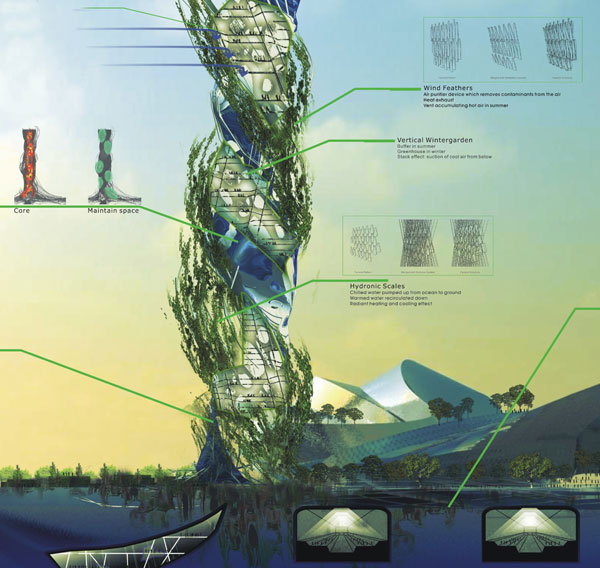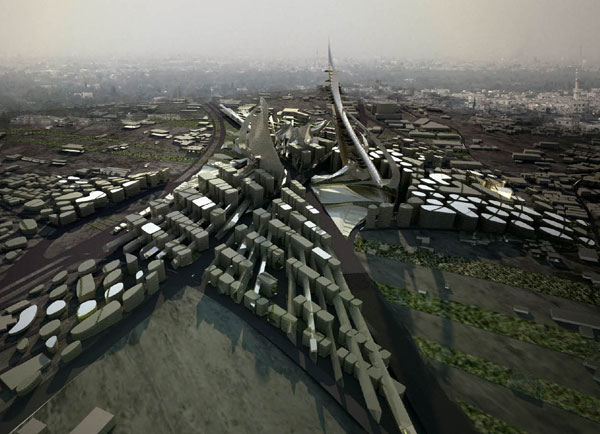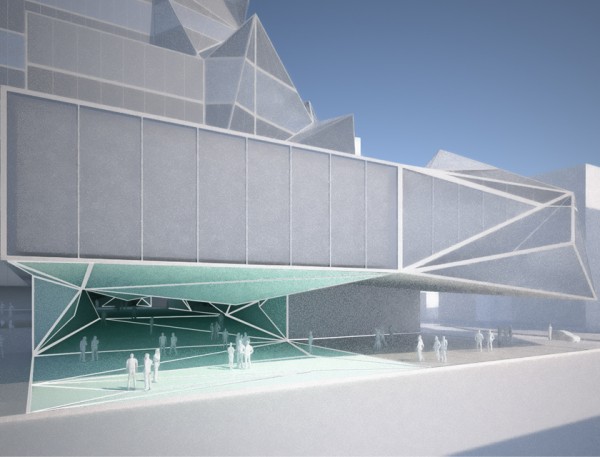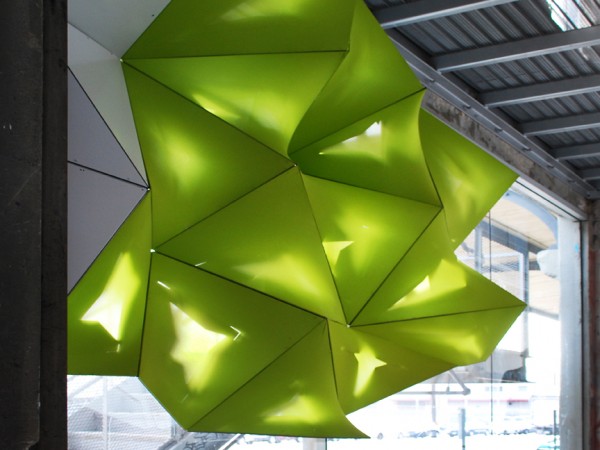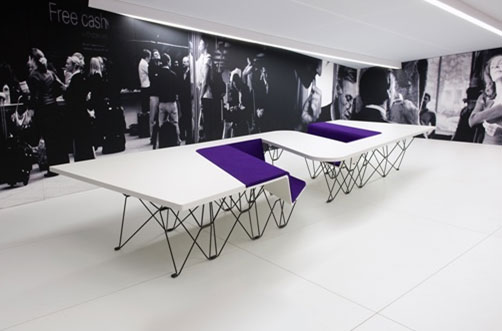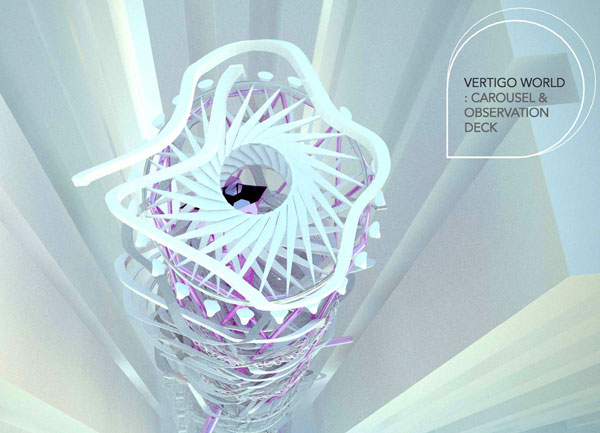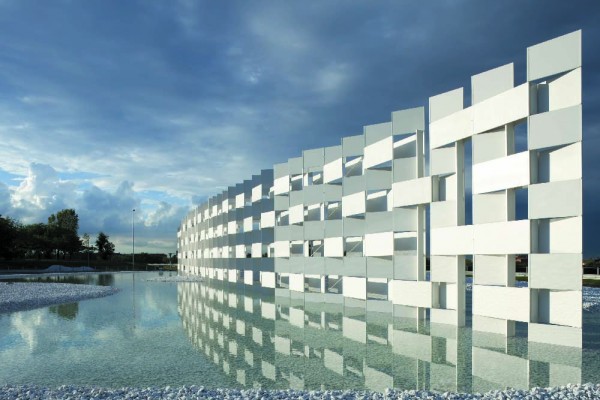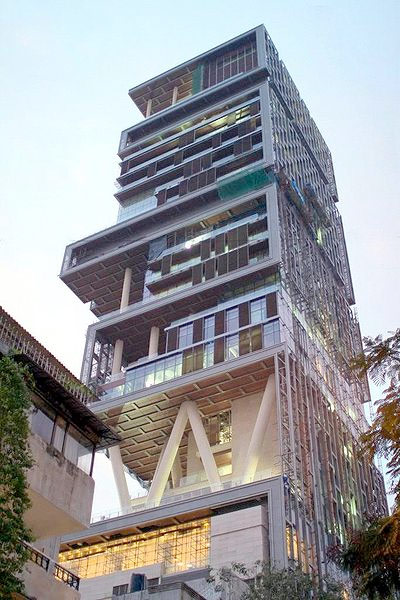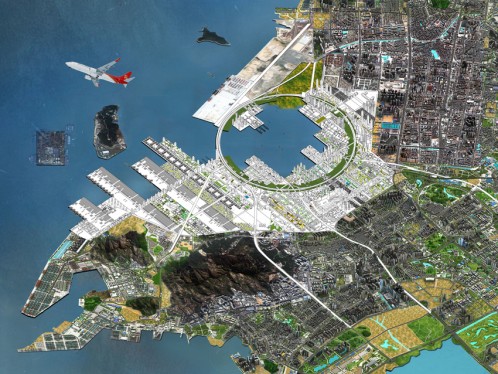Graduate students at the I.A. Lab of Taiwan University proposed a new urban masterplan and skyscraper for the port of Kaohsiung, Taiwan. The “Harbor Capital” is the second largest city of the country and the 6th largest port in the world and since 2009 the most densely populated area of Taiwan.
The so-called Acupuncture Tower designed by Kulthida Songkittipakdee, Jen Hung, Tien Wu, and Cheng Pan was inspired on the “memory” of the site’s landscape. Its form derives from the analysis of the different forces (wind, ocean, soil) that activate the region. The tower blends to the existing urban fabric through delicate structures that peel off from the main core and integrate to five different areas of the city providing infrastructure and recreational spaces.
The Acupuncture Tower is also a green project that desalinates ocean water, harvests wind and solar energies, and would recycle the majority of the port’s waste. The façade is also covered with algae membranes that in contact with sunlight and oxygen produce bio-fuel. Read the rest of this entry »

